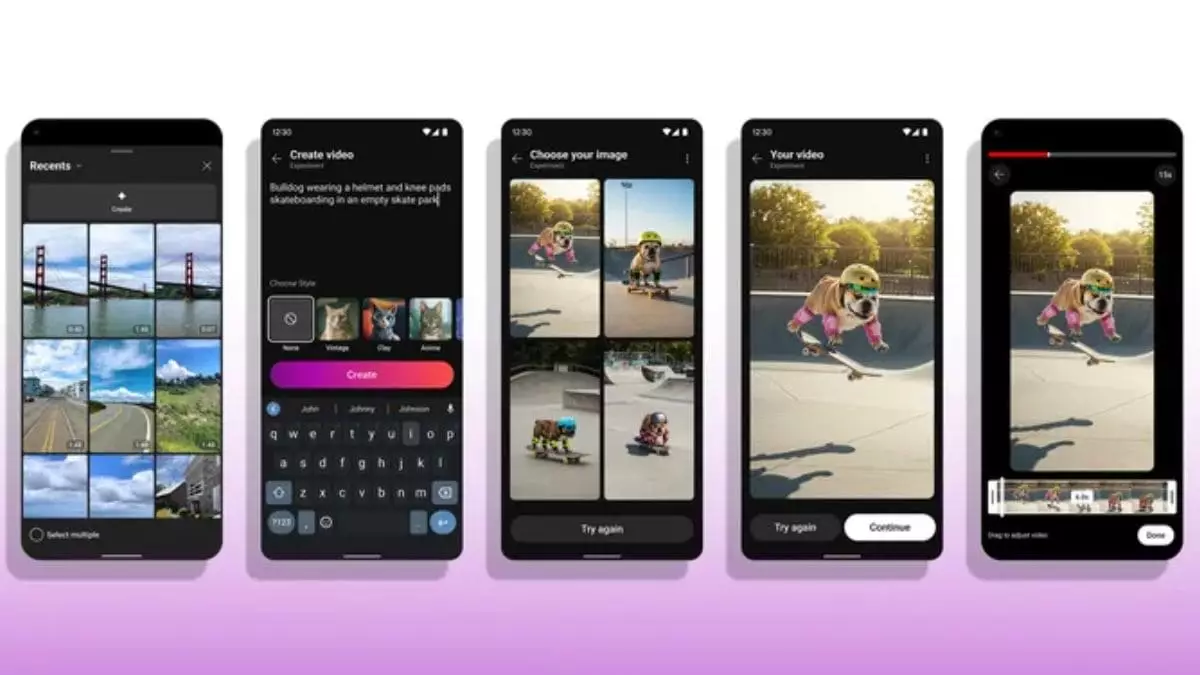On Thursday, YouTube unveiled an impressive new artificial intelligence feature designed to enhance the creative resources available to its content creators. By integrating Google’s advanced Veo 2 AI model with its existing Dream Screen functionality, YouTube is taking significant steps to empower creators to produce more engaging and imaginative video content. This integration represents a pivotal moment in content creation as it allows users not only to complement their existing footage but also to generate entirely new video content driven by their prompts and ideas.
Previously, the Dream Screen feature primarily facilitated the enhancement of video backgrounds using AI-generated images, but the new capabilities introduced elevate it to an entirely new level. The Veo 2 model, introduced by Google’s DeepMind, is a remarkable step forward in video generation technology. It allows users to simply type in descriptions of what they envision, and the model responds by crafting corresponding video clips. This empowers creators to delve into unexplored territories of visual storytelling, creating videos that would otherwise be difficult to assemble due to the limitations of traditional video sourcing.
One of the standout elements of the Veo 2 model is its sophistication in understanding complex cinematic concepts, such as genres, camera movements, and different lens types. This advanced understanding enables the AI to produce videos that are not only visually coherent but also artistically compelling. As creators navigate the new feature, they can tailor their inputs to achieve specific styles and lengths, making it a deeply personalized experience. This level of user interaction fosters creativity, allowing individuals to explore their artistic visions without the constraints often presented by conventional video production methods.
However, as with any powerful new tool, the integration of AI-generated content raises critical concerns about authenticity and the potential misuse of such technology. In response to these challenges, YouTube plans to implement SynthID watermarks on all AI-generated videos. This precaution aims to mitigate the risks associated with deepfake technology and ensures transparency for viewers, reinforcing the company’s commitment to responsible content sharing in a rapidly evolving digital landscape.
Currently, this innovative feature is limited to creators located in Australia, Canada, New Zealand, and the United States. As YouTube gathers feedback and refines its technology, there is great anticipation regarding future availability for a broader base of users worldwide. The underlying aim is clearly to democratize access to sophisticated video creation tools across its global creator community, thus leveling the playing field for aspiring filmmakers and content creators everywhere.
YouTube’s latest AI initiative, combining the capabilities of Veo 2 with Dream Screen, represents a monumental shift in how video content can be created and consumed. By offering creators an unprecedented level of intuitive control over video generation, YouTube is not only enhancing its platform but also making strides toward the future of visual media. As technology continues to evolve, it’s essential for platforms like YouTube to balance innovation with ethical considerations, ensuring that the creative community can thrive in an environment that both inspires and protects.


Leave a Reply